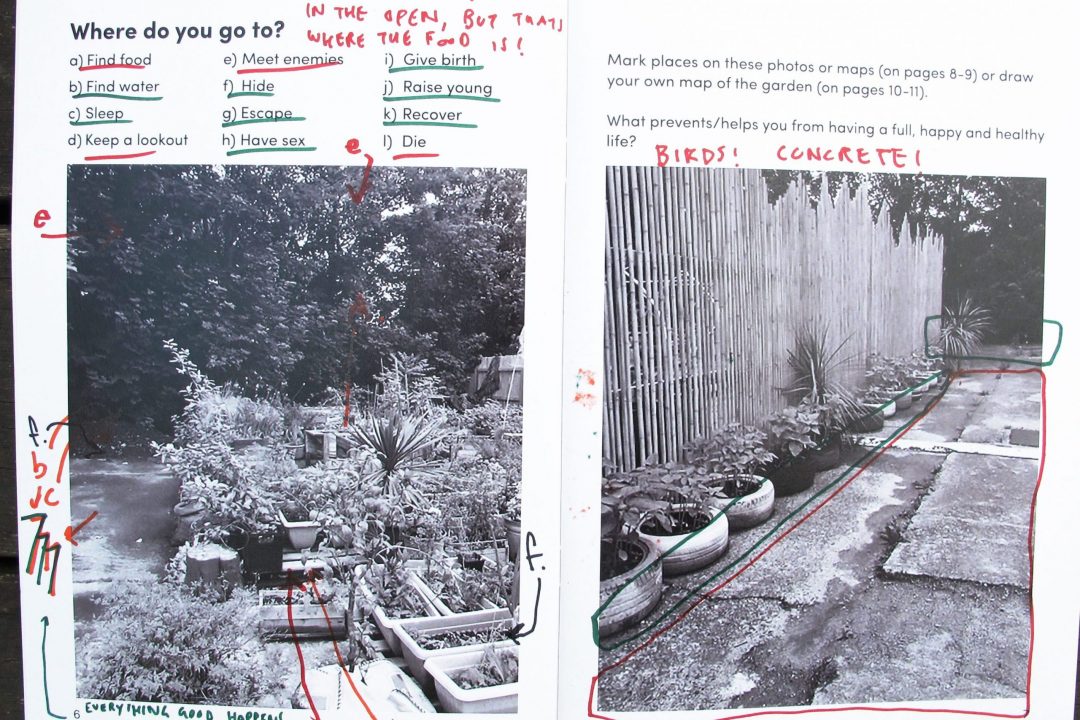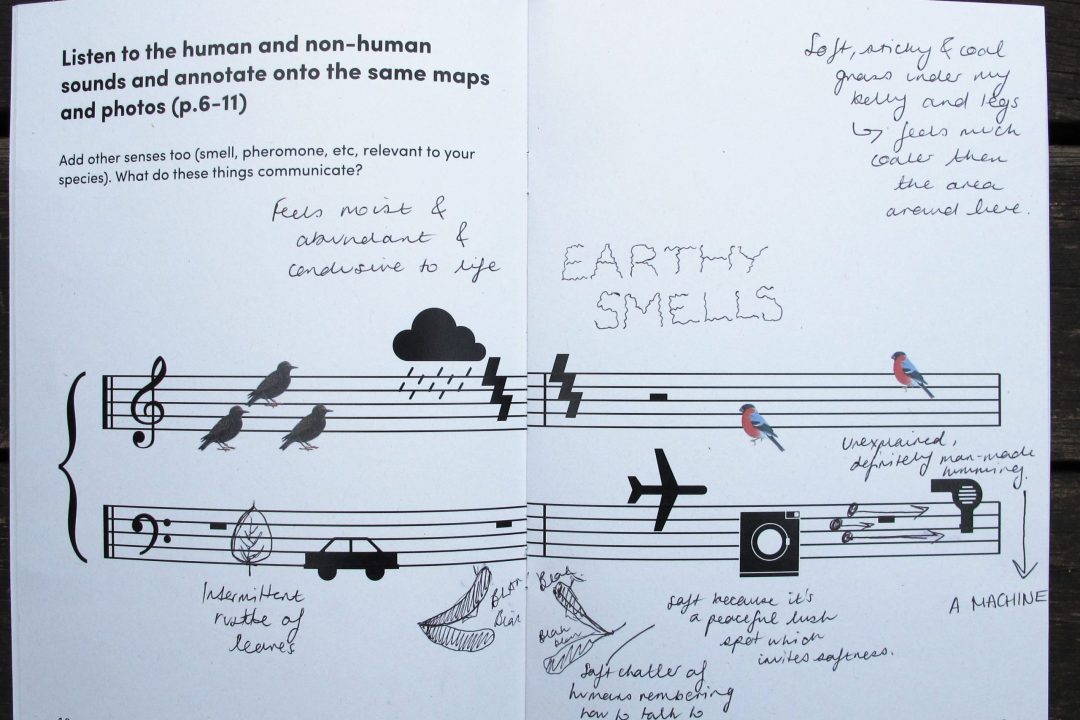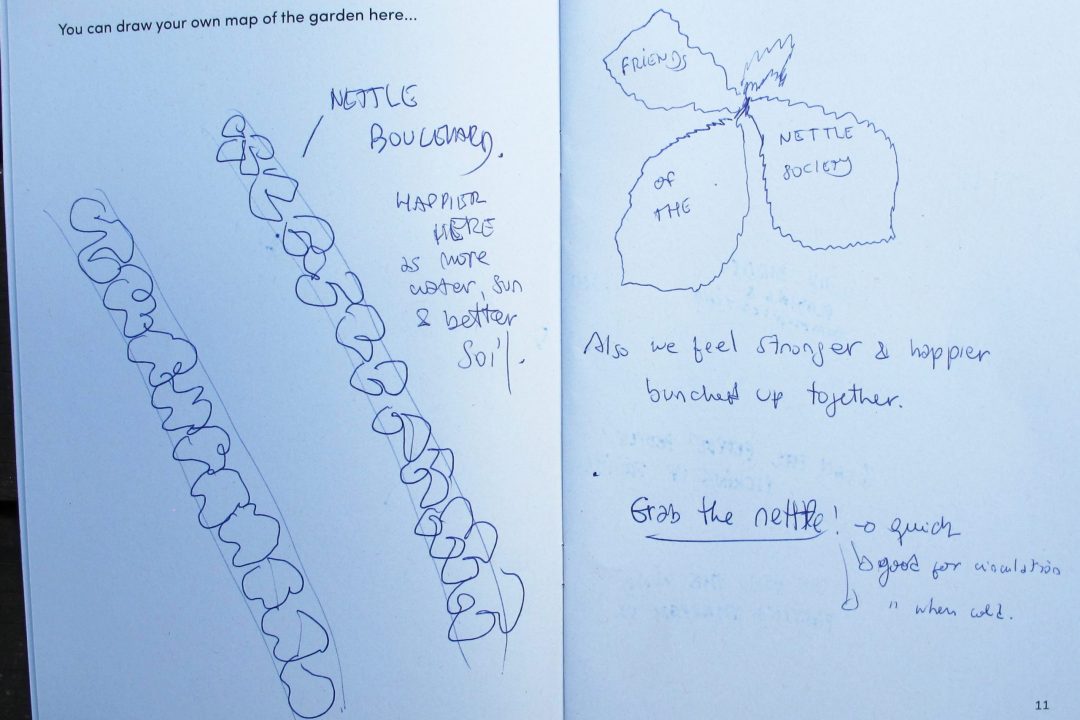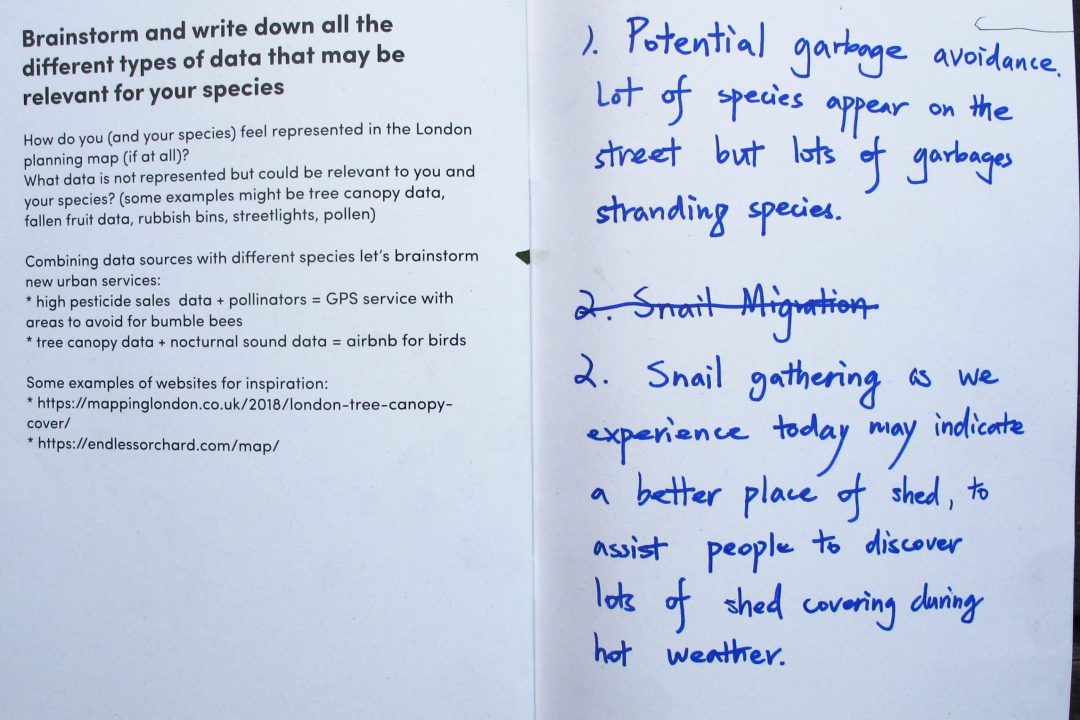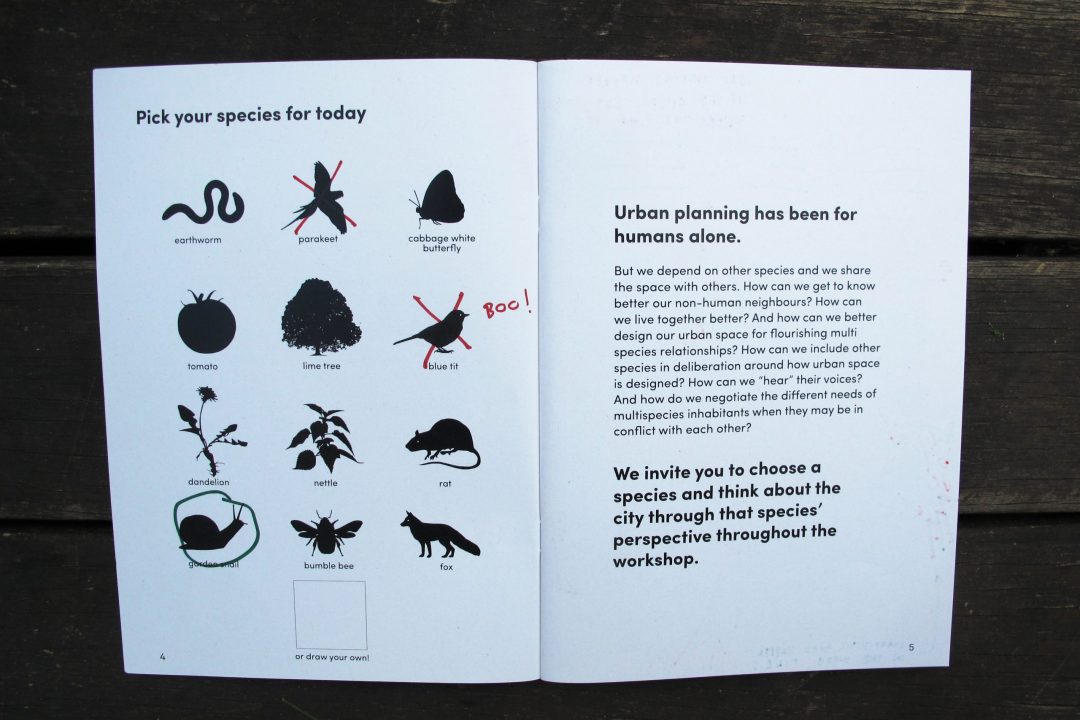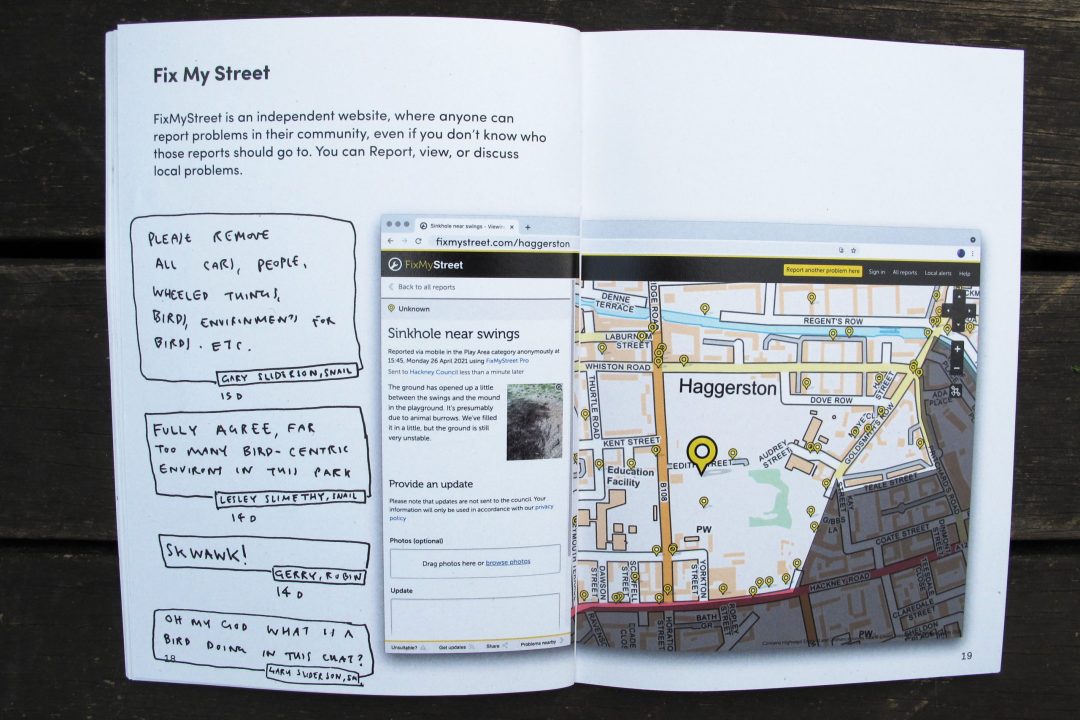Workshop 1 Pets and pests in the community garden
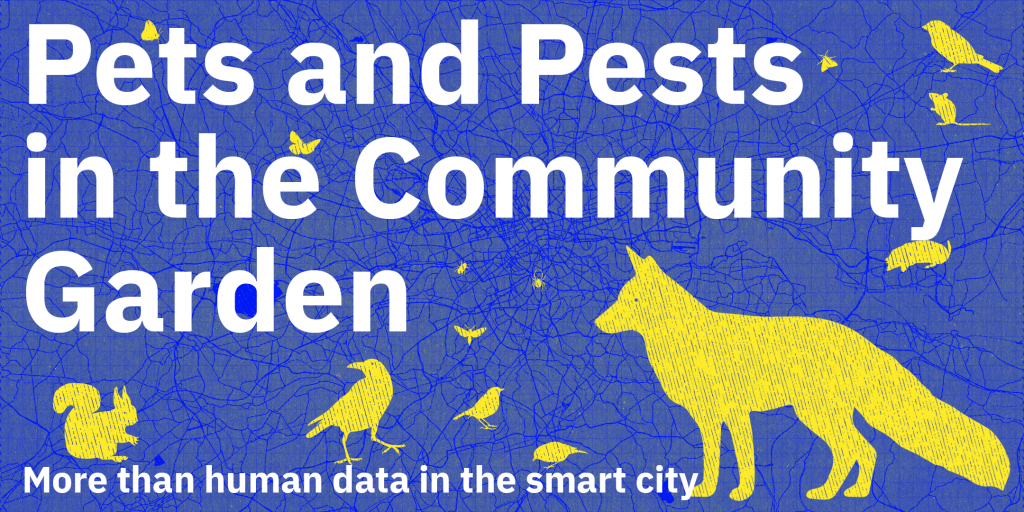
The first workshop, called Pets and Pests in the Community Garden, took place in July 2021 in Hackney, East London. The research team worked with partnering organisation, Cordwainers Grow, to develop a workshop that focused on multispecies urban planning. We aimed to ask with participants: how we might design our urban spaces for flourishing multispecies relationships? Building on Cordwainers’ practices of participatory walking and mapping of community gardens, the workshop involved walking and mapping community gardens, structured around a printed activity booklet that we gave to participants, which also included some of the probes and proposals from the design workbook.
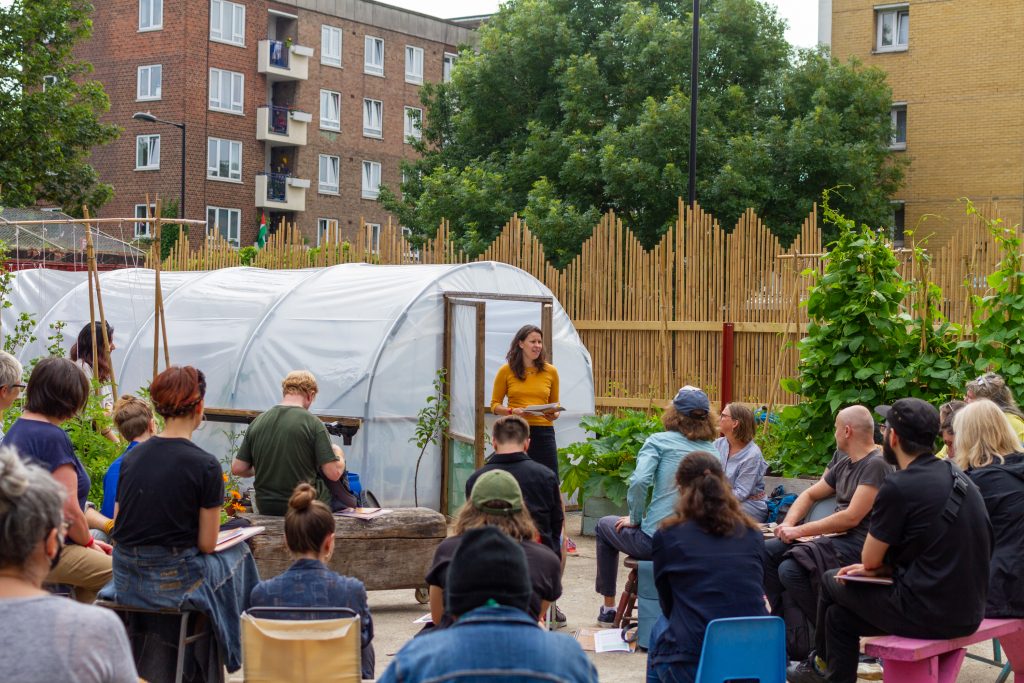
We began the workshop in the Garden of Earthly Delights, a community garden near Hackney Central Station in East London, situated on disused land and turned over for cultivation by local people. Participants were allocated different urban species to role-play throughout the workshop. These included: fox, parakeet, bumblebee, snail, lime tree, nettle, and tomato amongst others.
We explored where we, as our different species, might go about our daily business looking for food and love, raising our young.
A listening activity prompted thinking about the different kinds of data that might be available or useful in that space for different species.
We walked through London Fields to the Haggerston Community Orchard, in Haggerston park, full of old-growth trees and wildlife areas. Here we tried to understand the different issues of urban space for other species by completing a FixMyStreet complaint, which triggered discussions around the different, conflicting needs of multispecies inhabitants in urban space.
We looked at a London planning map, and explored different types of data that might be useful for different species. Finally, we gathered around a large map of the area to imagine combining data sources with different species to map out and imagine new services for different non-human inhabitants.
You can see some more of participants’ responses to the activities in the images below. And you can read two reflections on this workshop: the first, by Kate Poland from Cordwainers Grow, in this piece called “Could urban planners be less human?“. The second, by Helene Schulze from the Garden of Earthly Delights, called “Whose voice counts in protecting our green spaces?“
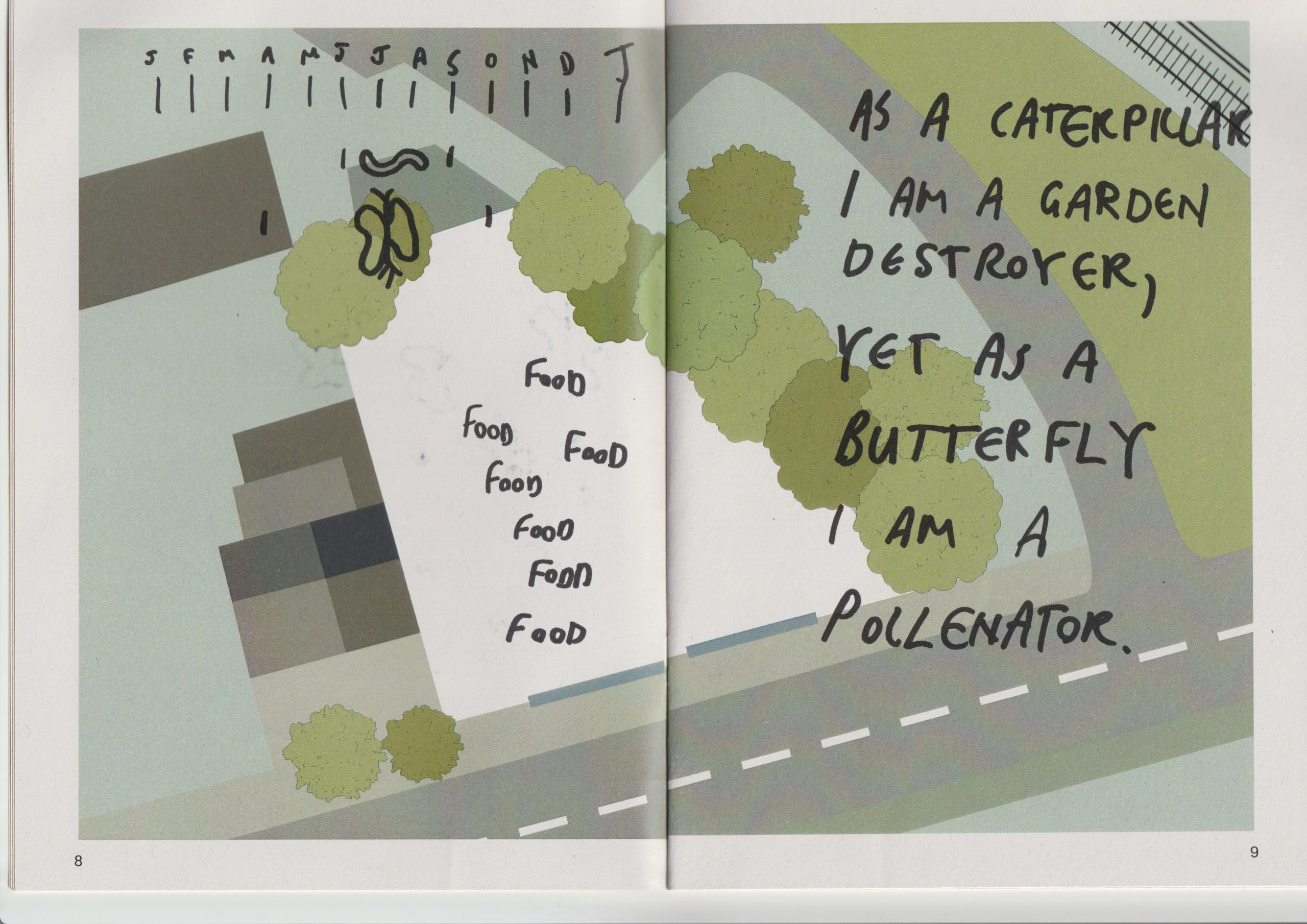
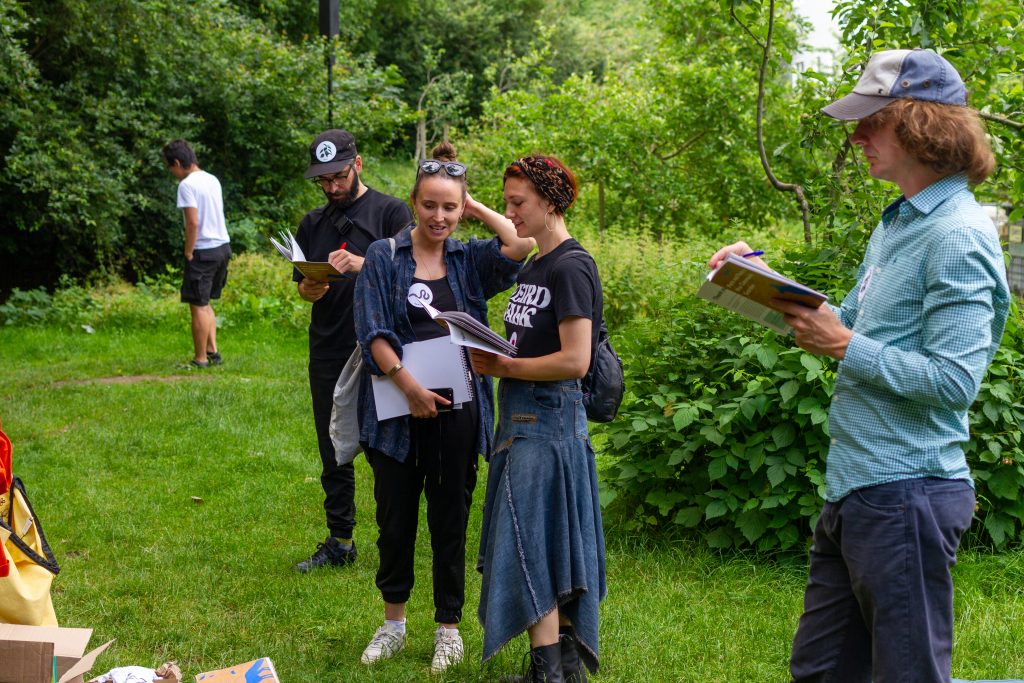
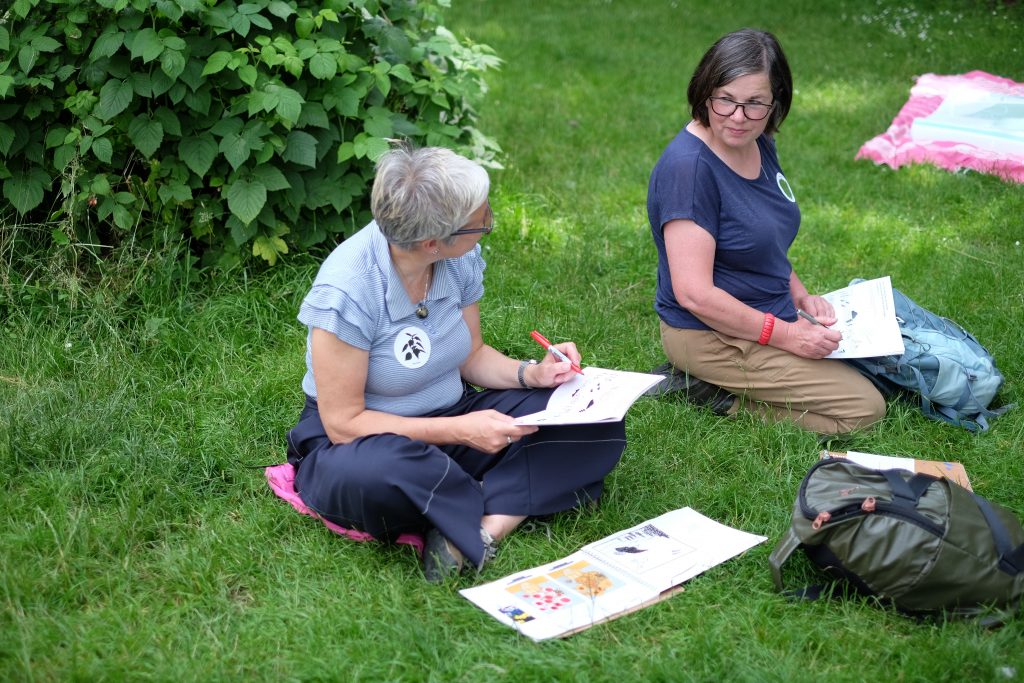
Workshop Material
Download the workshop materials here:
- Species Sticker (A4)
- Activity Booklet (A6 portrait)
- Species Cards (A6 landscape)
- Haggerston Park Map (A0)

